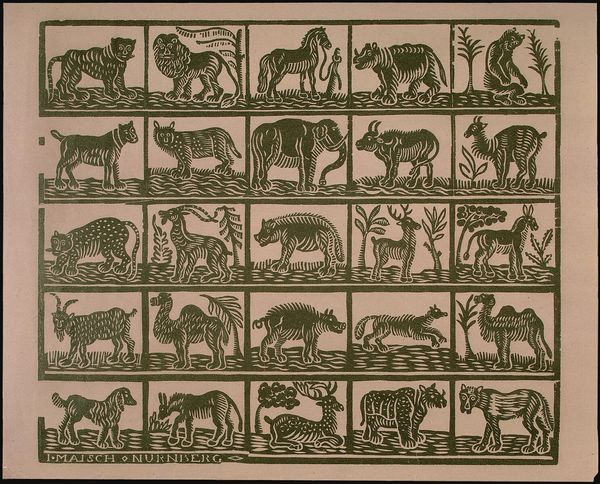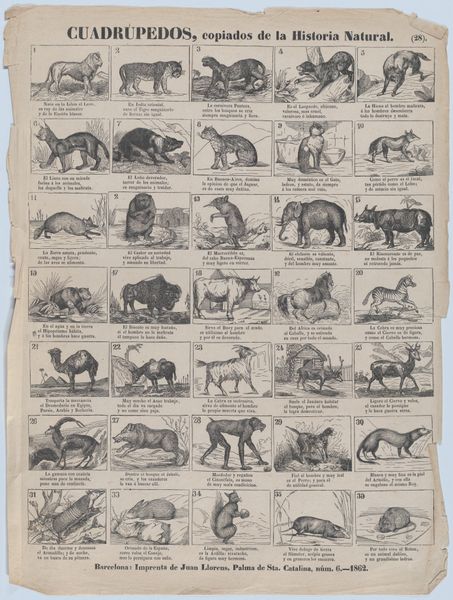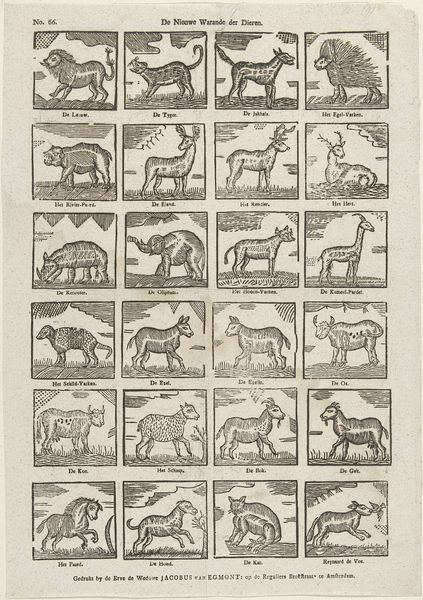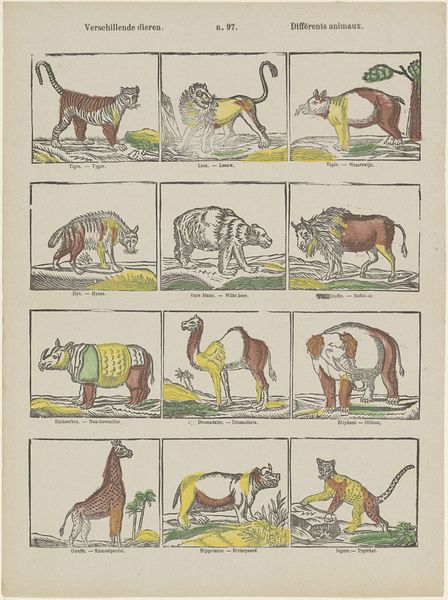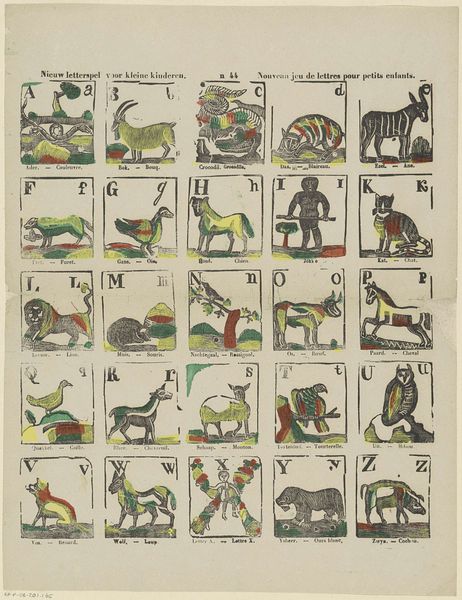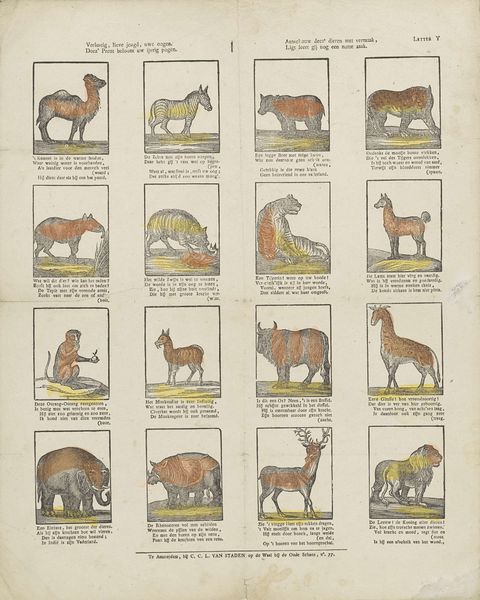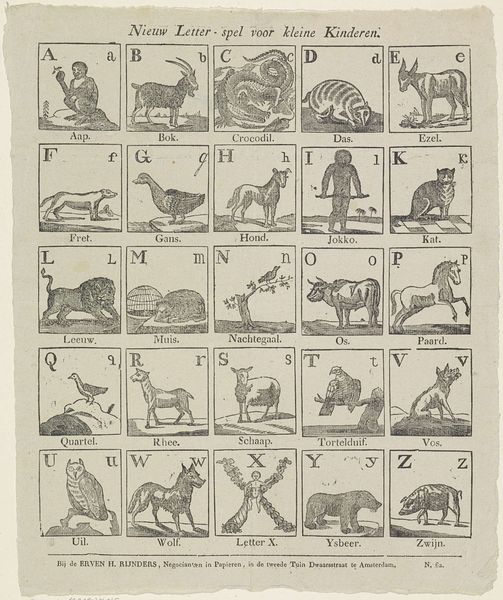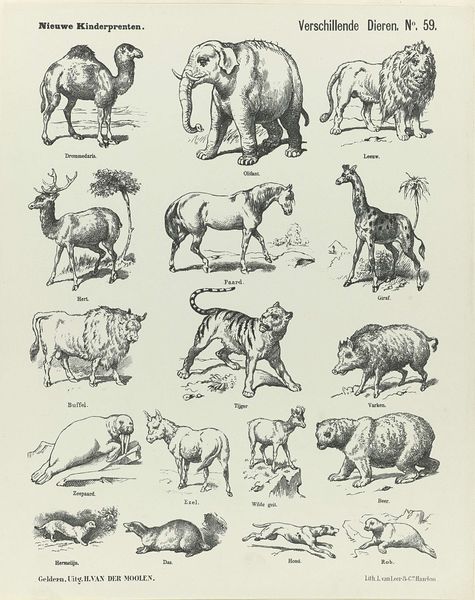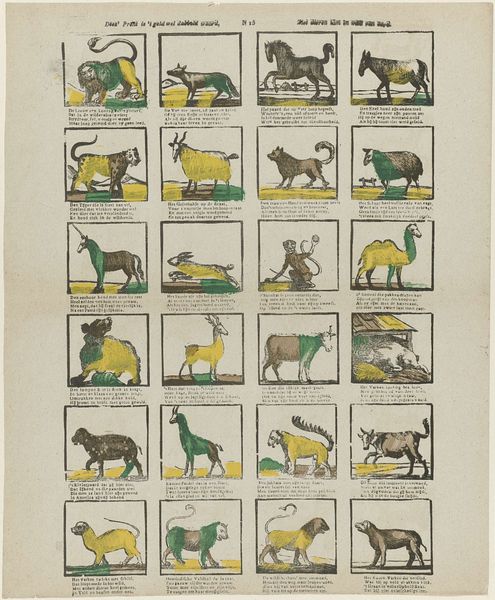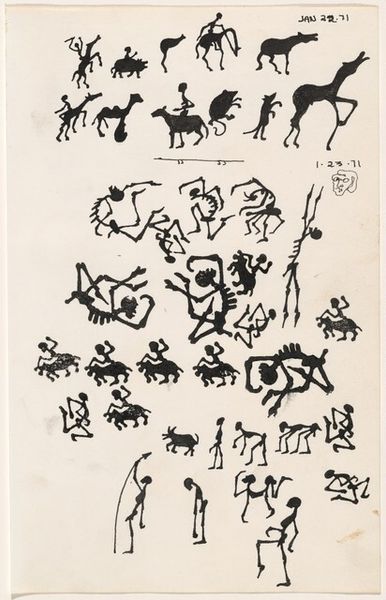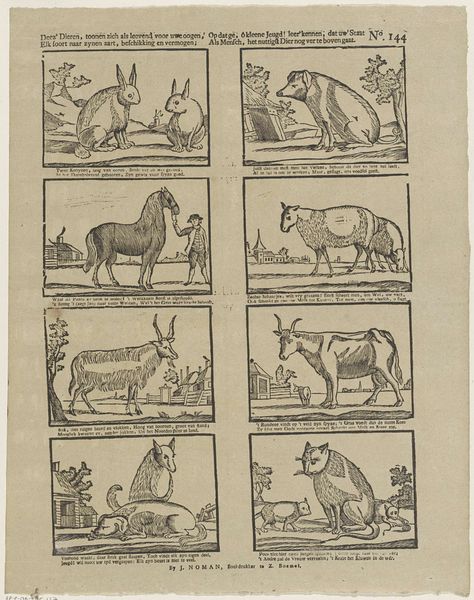
drawing, print, woodcut
#
drawing
#
animal
# print
#
ukiyo-e
#
figuration
#
woodcut
Dimensions: Sheet: 17 5/16 × 12 3/8 in. (44 × 31.5 cm)
Copyright: Public Domain
This is sheet number ten of figures for Chinese shadow puppets, created in Barcelona by Juan Llorens in 1859. But what does it mean to call these figures "Chinese" here in Spain? The sheet shows different animals, such as a tiger, an elephant, and a rhinoceros, rendered in bold black ink. The composition is simple, yet the cultural implications are complex. During the 19th century, there was increasing European interest in East Asia, fueled by colonial expansion and trade. Shadow puppetry, a traditional Chinese art form, became a popular source of entertainment in Europe. The exoticism of "Chinese shadows" captivated European audiences, though often divorced from any real understanding of Chinese culture. We can use sources such as colonial archives, trade records, and popular literature to better understand the history of cultural exchange and the ways in which European artists and institutions appropriated non-Western forms. The meaning of art is always dependent on the social conditions and historical contexts in which it is made and received.
Comments
No comments
Be the first to comment and join the conversation on the ultimate creative platform.
